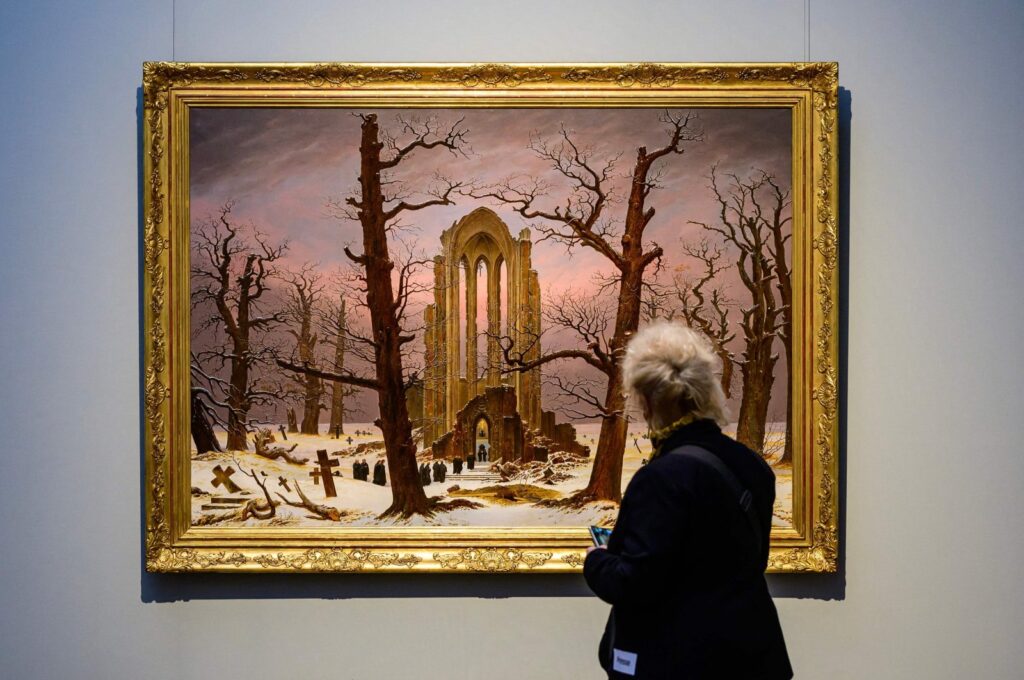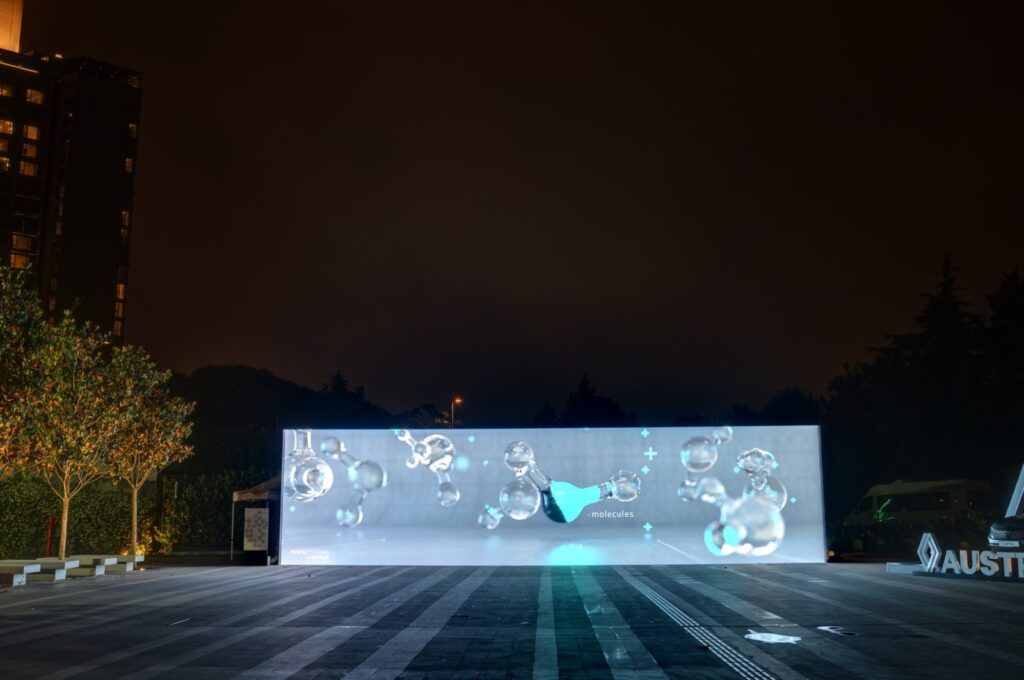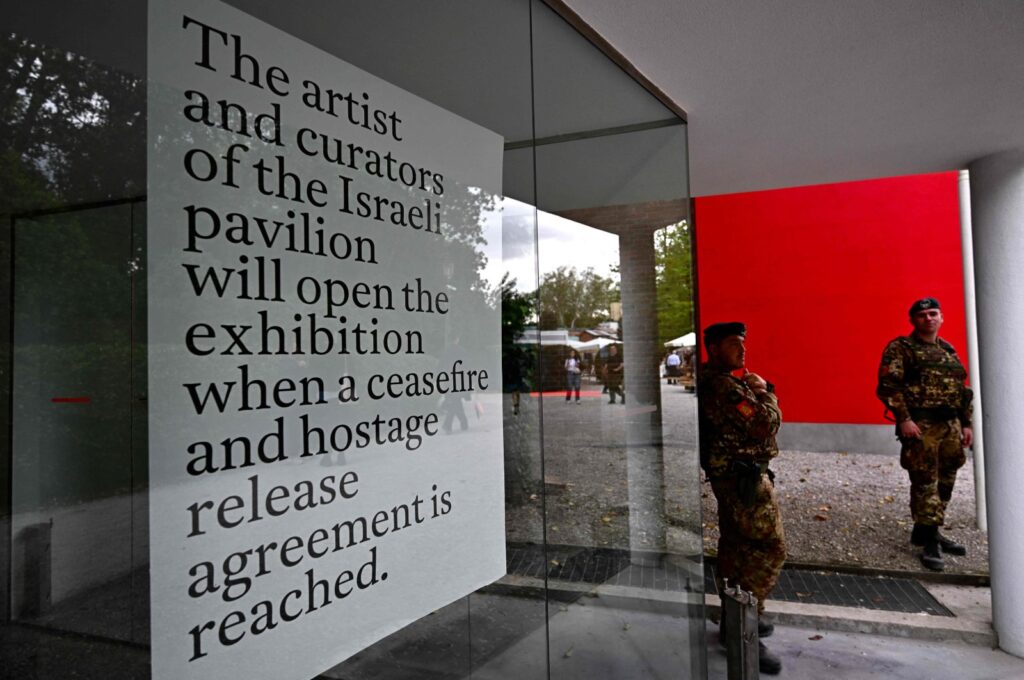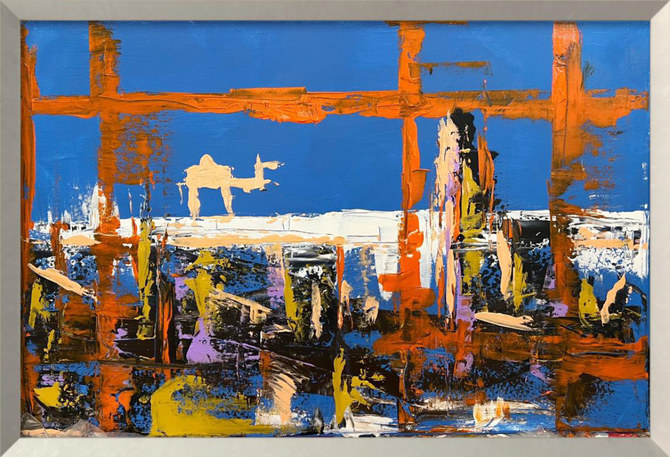
Erin Clare Brown
As the Tunisian-Finnish artist Dora Dalila Cheffi approached her 30th birthday, the questions from family and friends started rolling in, primarily: “When are you going to get married?”
The clock was ticking, they insisted, and who doesn’t love planning a big Tunisian wedding?
Instead of dismissing the pressure as retrograde meddling, Cheffi took it as a prompt. However, instead of her own nuptials she set about planning a different kind of marriage-focused extravaganza — a series of paintings, videos and sculptures investigating all the trappings, traditions and peculiarities of Tunisian weddings in the 21st century.
Over the course of a year-long studio and research residency with the Kamel Lazaar Foundation, Cheffi attended dozens of weddings across Tunisia. There, she took in the atmosphere and rhythm of the events, collecting reference images and impressions, which she then wove into her work. It is on display at the B7L9 gallery in La Marsa, Tunis, until July 17.
:quality(70)/cloudfront-eu-central-1.images.arcpublishing.com/thenational/46FXQHEOUZHMTEOXT3EYSIQSYE.jpg?w=810&ssl=1)
While the wedding industrial complex focuses its attention squarely on the fairy-tale image of the bride, Cheffi turns her lens to quirky, overlooked details surrounding these intensely choreographed and controlled celebrations. Some are universal — who, for instance, could not instantly relate to Aunties Like the Tea, in which three old crones with displeased looks, not unlike Francisco de Goya’s Fates, sit on the sidelines scrutinising, inspecting and prognosticating the couple’s future as the party swirls about them?
Other canvases magnify details uniquely Tunisian. The more abstract Just Married captures a segment of a car’s windshield and hood, draped in streamers and bouquets, waiting for the wedding cortege. Two seemingly incongruous rectangles — one pink, the other teal — float in the frame: instantly recognisable to Tunisians as inspection and insurance decals, but delightfully obscure to the uninitiated viewer.
:quality(70)/cloudfront-eu-central-1.images.arcpublishing.com/thenational/SQMWKB7TQJFGLPTXU5FAVUHGDM.jpg?w=810&ssl=1)
The large format acrylic paintings are lively, with a sense of immediacy and energy, done in what has come to be Cheffi’s signature style of vivid, at times even lurid colours — lime greens, caustic oranges, acid yellow — and bold shapes to create fields within each painting, which draw the eye through the canvas’s story.
In Pour the Money If You Desire the Girls a bride and groom appear with heads draped together under a solid goldenrod veil — an extension of the bride’s Gustav Klimt-like robe — set against a pastel violet ground. The intimacy of the moment is disrupted as a bystander’s arm juts forth proffering a wad of bright pink 20-dinar notes, breaking the spell of a wedding as the culmination of romance and forcing the viewer to accept the transactional nature of these celebrations.
:quality(70)/cloudfront-eu-central-1.images.arcpublishing.com/thenational/TJST5BNHFFGJ5JXILPYRMLRLUM.jpg?w=810&ssl=1)
While the paintings, beautifully highlighted by Sanna Pietila’s deft scenography, make up the bulk of the exhibition, a series of videos play with the intersection of internet culture and the show’s core motifs prove even more captivating. Unlike much of contemporary video art, Cheffi’s pieces are far from self serious and their winking silliness and accessibility make them as delightful as they are insightful.
A woman goes through a torturous routine of coiffing, curling and contouring over the course of an hour and a half en route to matrimonial perfection in Aziza’s 50-Step Beauty Guide for the Bride. With a low camera angle and bright ring lighting, the piece is as much a sendup of YouTube beauty tutorials as it is a meditation on and critique of the extreme transformation women undergo for their weddings.
:quality(70)/cloudfront-eu-central-1.images.arcpublishing.com/thenational/XFP5FGRGXVDYNNPCXER4NH2GOY.JPG?w=810&ssl=1)
The show’s most triumphant piece is Tunisian Dance Lesson With Mamou, a take on TikTok dance tutorial memes and the tension between tradition and practice in art forms like dance. Clad in a bright green satin tuxedo, the artist plays assistant to a militant dance instructor — wearing a matching/clashing bright violet tux — coaching her, and the viewer, through three key dance moves needed to succeed at any Tunisian wedding.
“Traditional Tunisian dance is not just getting drunk under an olive tree on a few beers then having a fight with your friends,” Mamou deadpans to the camera. “It is also an art, with value, and it has its rules.”
As Mamou demonstrates the rules of “the airplane, the laundry washer and the lift and release,” jutting his hips out, wheeling his arms and stomping to the beat provided by a drummer off camera, Cheffi — and, soon, nearly every person who watches the video — begins to follow along.
They are, in the end, hopeless amateurs to Mamou’s deft fluidity and charisma, lost in the pure absurdity and joy of the moment, as any good wedding guest should.
Courtesy: thenationalnews
The post The prestige and peculiarities of Tunisian weddings in Dora Dalila Cheffi’s latest exhibit appeared first on The Frontier Post.








